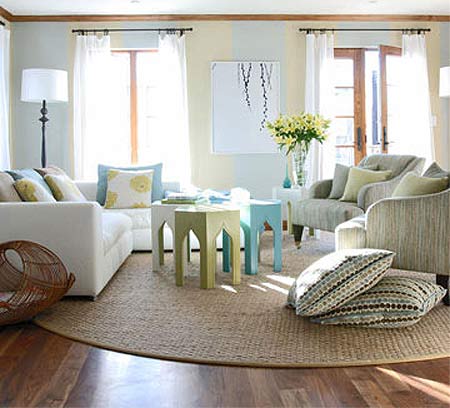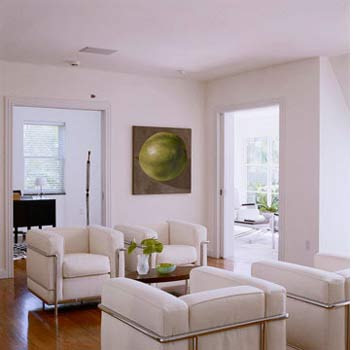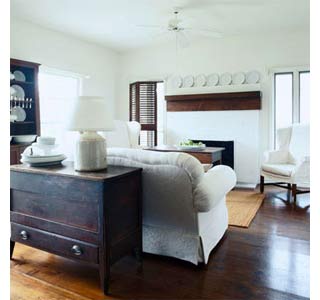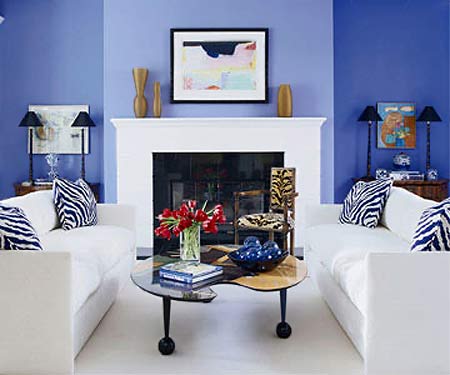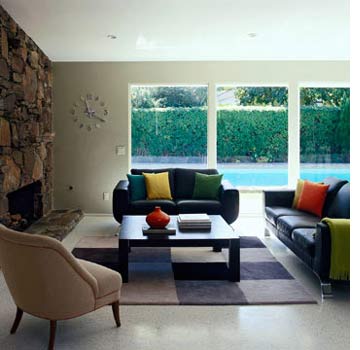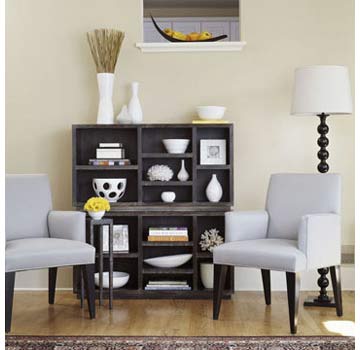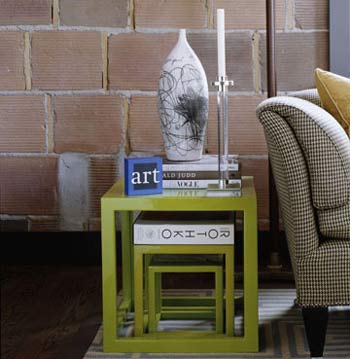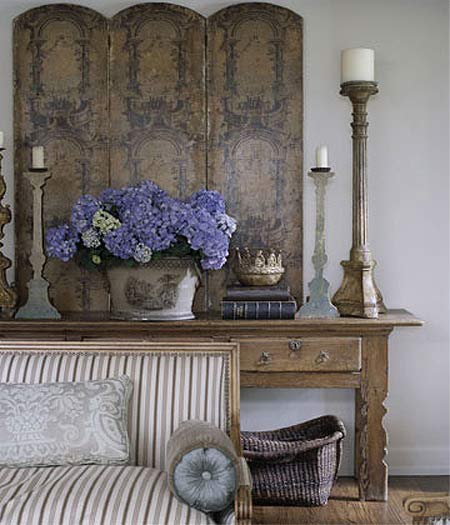Tips on arranging furniture in a lounge
If you're not sure how to place furniture in a lounge or open plan living area, here are a selection of designer tips on how to arrange furniture...
Use a large area rug to unify a seating group within a larger space. If the rug isn't large enough to contain all of the seating pieces, make sure that those farthest from the wall are solidly anchored on the "island."
If you don't have room for the usual sofas and love seats, four comfy chairs will serve as well - or perhaps better. In this clean, contemporary setting, matching white leather chairs define an orderly, compact, yet welcoming seating group.
Divide a large open plan living/dining space into separate zones with furniture placement. Positioning the sofa in the centre of the room, facing the fireplace, creates a visual barrier and defines the "end wall" of the living room space. Backing it with a tall chest marks the border of the dining area.
Pairs of matching sofas, side tables, and lamps strike a perfect balance on each side of the fireplace in this contemporary living room. Symmetry imposes a sense of order on the space. To keep symmetrical spaces from being stiff and boring, introduce variety - the table shaped like an artist's palette throws a curve into the room's straight lines, and artwork and accessories add a touch of asymmetry.
In this large living room, a three-cushion sofa and a love seat form an L-shape, framing the large coffee table. This simple arrangement is anchored by the fireplace and provides a convenient conversational cluster, while the large rug defines the space. A single chair at the other side of this group easily moves beside the sofa and turns to face the television if TV watching is on the agenda.
Arrange items on open shelves with an eye toward the overall composition. Using a variety of objects in different shapes and sizes creates interest and movement, while using all white or black and white objects in a black shelving unit unifies them into an orderly whole.
Eye-pleasing tabletop displays are an exercise in composition. The goal is to lead the eye from the table's surface up to nearby furniture or wall pieces. A low stack of books serve as a pedestal for a ceramic pot to give it more presence. The candlestick traces a taller line to lead the eye up toward the lampshade.
A tablescape - a collection of objects composed according to principles of variety, repetition, unity, and contrast - turns any table into a focal point for the room. This simple but effective tablescape consists of just a few objects: a collection of antique candlesticks, a couple of pots, and an antique folding screen. The soft, low-key colours - brown, black, grey - harmonise with the colour of the wood table, while the blue hydrangeas introduce a pop of colour that arrests the eye.

